Displacement Mechanism of Sequential Droplets on a Wetting Confinement
Abstract
1. Introduction
2. Numerical Model
2.1. Governing Equation
2.2. Interface Tracking
2.3. Wetting Confinement
2.4. Projection Method
3. Results and Discussion
3.1. Validation
3.2. Spreading on a Wetting Confinement
3.2.1. Prediction of the Spread Length
3.2.2. Prediction of the Confined Angle
3.3. Formation of Uniform Lines
4. Conclusions
- (1)
- The spreading length and the function found by the numerical simulations align well with the corresponding analytic prediction when the volume correction factor is taken as 0.8.
- (2)
- The evolution of the spreading shows that in the early stages of the displacement, the width of the confinement has no effect on the spreading, due to the free movement of the contact line before it reaches the boundary of the confinement. In addition, the dimensionless width and the wetting angle have a significant impact on the amplitude of the oscillations in the vertical direction.
- (3)
- The pinned contact line on the boundaries of the confinement are parallel. With a droplet spacing , predicted by Equation (31), it is feasible to form a liquid line with a lower cross-section area and higher uniformity by the sequential displacement of droplets on the wetting confinement.
Author Contributions
Funding
Data Availability Statement
Conflicts of Interest
References
- Samusjew, A.; Kratzer, M.; Moser, A.; Teichert, C.; Krawczyk, K.K.; Griesser, T. Inkjet printing of soft, stretchable optical waveguides through the photopolymerization of high-profile linear patterns. ACS Appl. Mater. Interfaces 2017, 9, 4941–4947. [Google Scholar] [CrossRef]
- Hamad, A.; Mian, A.; Khondaker, S.I. Direct-write inkjet printing of nanosilver ink (UTDAg) on peek substrate. J. Manuf. Processes 2020, 55, 326–334. [Google Scholar] [CrossRef]
- Rajashekhar, V.S.; Pravin, T.; Thiruppathi, K. A review on droplet deposition manufacturing a rapid prototyping technique. Int. J. Manuf. Technol. Manag. 2019, 33, 362–383. [Google Scholar] [CrossRef]
- Khoo, H.; Allen, W.S.; Arroyo-Currás, N.; Hur, S.C. Rapid prototyping of thermoplastic microfluidic devices via SLA 3D printing. Sci. Rep. 2024, 14, 17646. [Google Scholar] [CrossRef] [PubMed]
- Qi, L.; Zhong, S.; Luo, J.; Zhang, D.; Zuo, H. Quantitative characterization and influence of parameters on surface topography in metal micro-droplet deposition manufacture. Int. J. Mach. Tools Manuf. 2015, 88, 206–213. [Google Scholar] [CrossRef]
- Ma, Y.; Wang, S.; Wu, Z. Photolithographic Microfabrication of Microbatteries for On-Chip Energy Storage. Nano-Micro Letters. 2025, 17, 105. [Google Scholar] [CrossRef]
- Jung, H.C.; Cho, S.H.; Joung, J.W.; OH, Y.S. Studies on Inkjet-Printed Conducting Lines for Electronic Devices. J. Electron. Mater. 2007, 36, 1211–1218. [Google Scholar] [CrossRef]
- Kastner, J.; Faury, T.; Aurberhuber, H.M. Silver-based reactive ink for inkjet-printing of conductive lines on textiles. J. Electron. Mater. 2017, 176, 84–88. [Google Scholar] [CrossRef]
- Graham, P.J.; Farhangi, M.M.; Dolatabadi, A. Dynamics of droplet coalescence in response to increasing hydrophobicity. Phys. Fluids 2012, 24, 112105. [Google Scholar] [CrossRef]
- Zhang, L.; Zhu, Y.; Cheng, X. Numerical investigation of multi-droplets deposited lines morphology with a multiple-relaxation-time Lattice Boltzmann model. Chem. Eng. Sci. 2017, 171, 534–544. [Google Scholar] [CrossRef]
- Dalili, A.; Chandra, S.; Mostaghimi, J.; Charles Fan, H.T.; Simmer, J.C. Formation of liquid sheets by deposition of droplets on a surface. J. Colloid Interface Sci. 2014, 418, 292–299. [Google Scholar] [CrossRef] [PubMed]
- Singh, J.; Roy, S. Coalescence preference dynamics for droplet growth during single-component fluid phase separation. Front. Phys. 2022, 10, 1027192. [Google Scholar] [CrossRef]
- Du, Z.; Xing, R.; Cao, X.; Yu, X.; Han, Y. Symmetric and uniform coalescence of ink-jetting printed polyfluorene ink drops by controlling the droplet spacing distance and ink surface tension/viscosity ratio. Polymer 2017, 115, 45–51. [Google Scholar] [CrossRef]
- Davis, S.H. Moving Contact Lines and Rivulet Instabilities-1. The Static Rivulet. J. Fluid Mech. 1980, 98, 225–242. [Google Scholar]
- Schiaffino, S.; Sonin, A.A. Formation and stability of liquid and molten beads on a solid surface. J. Fluid Mech. 1997, 343, 95–110. [Google Scholar] [CrossRef]
- Duineveld, P.C. The stability of ink-jet printed lines of liquid with zero receding contact angle on a homogeneous substrate. J. Fluid Mech. 2003, 447, 175–200. [Google Scholar] [CrossRef]
- Thompson, A.B.; Tipton, C.R.; Juel, A.; Hazel, A.L.; Dowling, M. Sequential deposition of overlapping droplets to form a liquid line. J. Fluid Mech. 2014, 761, 261–281. [Google Scholar] [CrossRef]
- Cheng, X.; Zhu, Y.; Zhang, L.; Wang, C.; Li, S. Lattice Boltzmann simulation of multiple droplets impingement and coalescence in an inkjet-printed line patterning process. Int. J. Comput. Fluid Dyn. 2017, 31, 450–462. [Google Scholar] [CrossRef]
- Cheng, X.; Zhu, Y.; Zhang, L.; Zhang, D.; Ku, T. Numerical analysis of deposition frequency for successive droplets coalescence dynamics. Phys. Fluids 2018, 30, 042102. [Google Scholar] [CrossRef]
- Stringer, J.; Derby, B. Formation and Stability of Lines Produced by Inkjet Printing. Langmuir 2010, 26, 10365–10372. [Google Scholar] [CrossRef]
- Soltman, D.; Subramanian, V. Inkjet-Printed Line Morphologies and Temperature Control of the Coffee Ring Effect. Langmuir 2008, 24, 2224–2231. [Google Scholar] [CrossRef] [PubMed]
- Abunahla, R.; Rahman, M.S.; Naderi, P. Improved Inkjet-Printed Pattern Fidelity: Suppressing Bulges by Segmented and Symmetric Drop Placement. J. Micro- Nano-Manuf. 2020, 8, 031001–031002. [Google Scholar] [CrossRef]
- Ma, C.; Bothe, D. Direct numerical simulation of thermocapillary flow based on the volume of fluid method. Int. J. Multiph. Flow 2011, 37, 1045–1058. [Google Scholar] [CrossRef]
- Popinet, S. An accurate adaptive solver for surface-tension-driven interfacial flows. J. Comput. Phys. 2009, 228, 5838–5866. [Google Scholar] [CrossRef]
- Aland, S.; Voigt, A. Benchmark computations of diffuse interface models for two-dimensional bubble dynamics. Int. J. Numer. Methods Fluids 2012, 69, 747–761. [Google Scholar] [CrossRef]
- Frachon, T.; Zahedi, S. A cut finite element method for incompressible two-phase Navier–Stokes flows. J. Comput. Phys. 2019, 384, 77–98. [Google Scholar] [CrossRef]
- Agnese, M.; Nürnberg, R. Fitted front tracking methods for two-phase incompressible Navier–Stokes flow: Eulerian and ALE finite element discretizations. Int. J. Numer. Anal. Mod. 2020, 17, 613–642. [Google Scholar]
- Duan, B.; Li, B.; Yang, Z. An energy diminishing arbitrary Lagrangian–Eulerian finite element method for two-phase Navier–Stokes flow. J. Comput. Phys. 2022, 461, 111215. [Google Scholar] [CrossRef]
- Inguva, V.; Kenig, E.Y.; Perot, J.B. A front-tracking method for two-phase flow simulation with no spurious currents. J. Comput. Phys. 2022, 456, 111006. [Google Scholar] [CrossRef]
- Pan, J.; Long, T.; Chirco, L.; Scardovelli, R.; Popinet, S.; Zaleski, S. An edge-based interface tracking (EBIT) method for multiphase-flow simulation with surface tension. J. Comput. Phys. 2024, 508, 113016. [Google Scholar] [CrossRef]
- Wang, Z.; Chen, E.; Zhao, Y. The effect of surface anisotropy on contact angles and the characterization of elliptical cap droplets. Sci. China Technol. Sci. 2018, 61, 309–316. [Google Scholar] [CrossRef]
- Peskin, C.S. Numerical analysis of blood flow in the heart. J. Comput. Phys. 1997, 25, 220–252. [Google Scholar] [CrossRef]
- Tryggvason, G.; Scardovelli, R.; Zaleski, S. Direct Numerical Simulations of Gas-Liquid Multiphase Flows; Cambridge University Press: Cambridge, UK, 2011. [Google Scholar]
- Zhang, H.; Liu, L.; Liao, Y.; Tan, Z.; Yan, H. Numerical simulation on bubble deformation and forces at moderate Reynolds number using front-tracking algorithm coupled with proportional-integral-derivative controller. Phys. Fluids 2024, 36, 113303. [Google Scholar] [CrossRef]
- Zhu, G.; Kou, J.; Yao, B.; Wu, Y.S.; Yao, J.; Sun, S. Thermodynamically consistent modelling of two-phase flows with moving contact line and soluble surfactants. J. Fluid Mech. 2019, 879, 327–359. [Google Scholar] [CrossRef]
- Zhu, G.; Kou, J.; Yao, J.; Li, A.; Sun, S. A phase-field moving contact line model with soluble surfactants. J. Comput. Phys. 2020, 405, 109170. [Google Scholar] [CrossRef]
- Li, W.; Lu, J.; Tryggvason, G.; Zhang, Y. Numerical study of droplet motion on discontinuous wetting gradient surface with rough strip. Phys. Fluids 2021, 33, 012111. [Google Scholar] [CrossRef]
- Gao, F.; Sonin, A.A. Precise deposition of molten microdrops: The physics of digital microfabrication. Proc. R. Soc. A 1994, 444, 533–554. [Google Scholar]
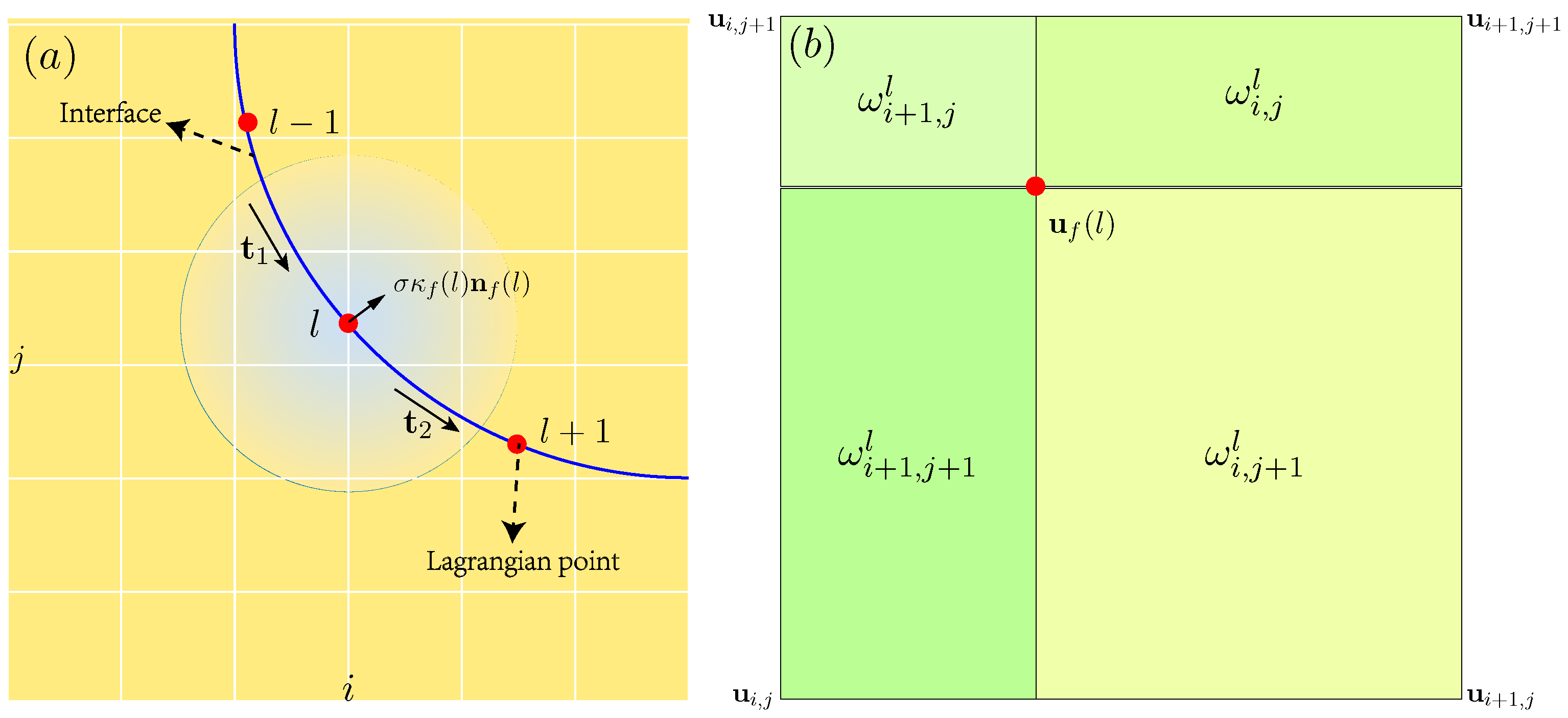

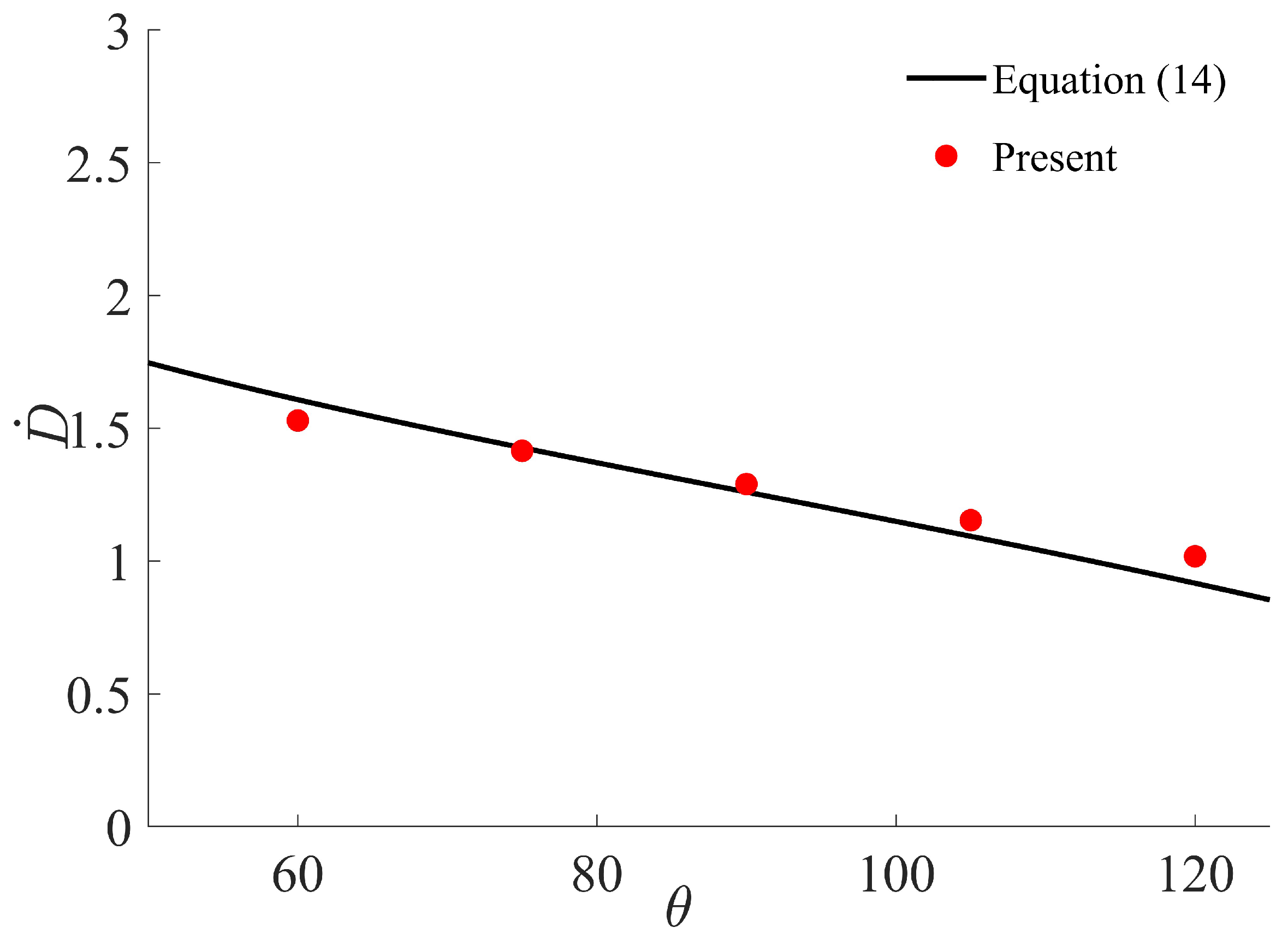

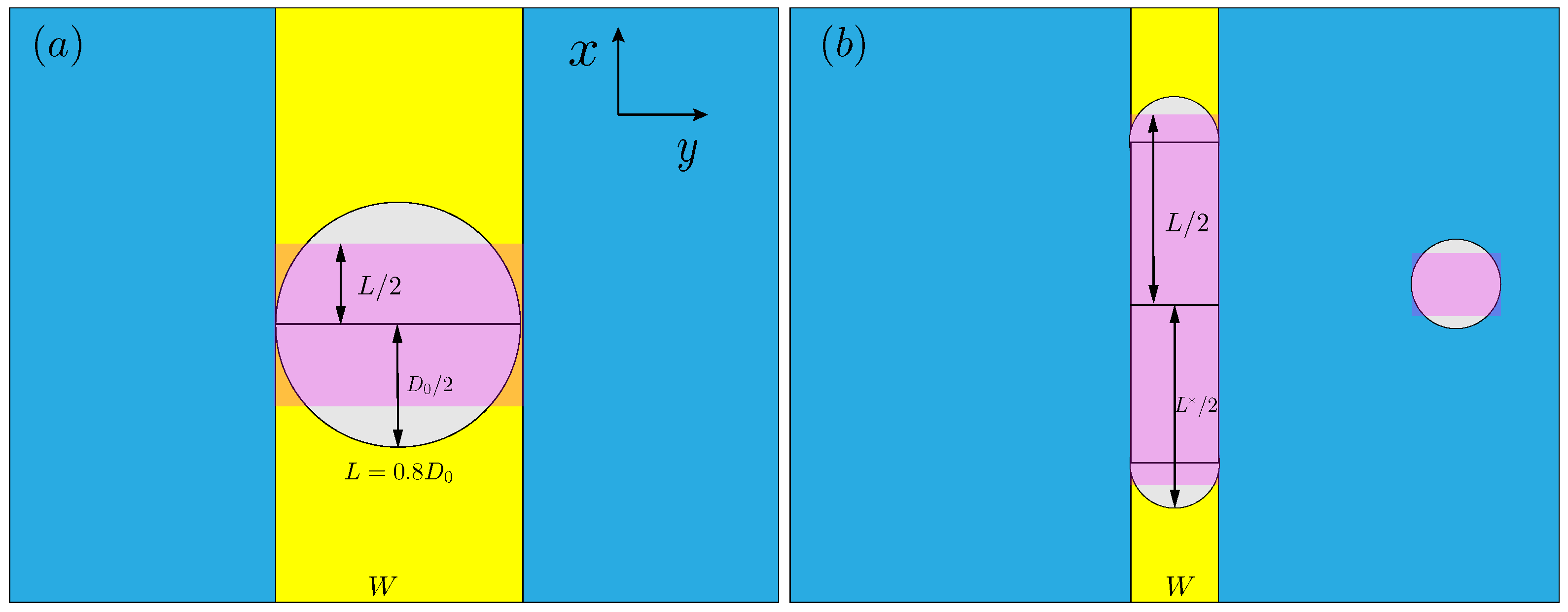
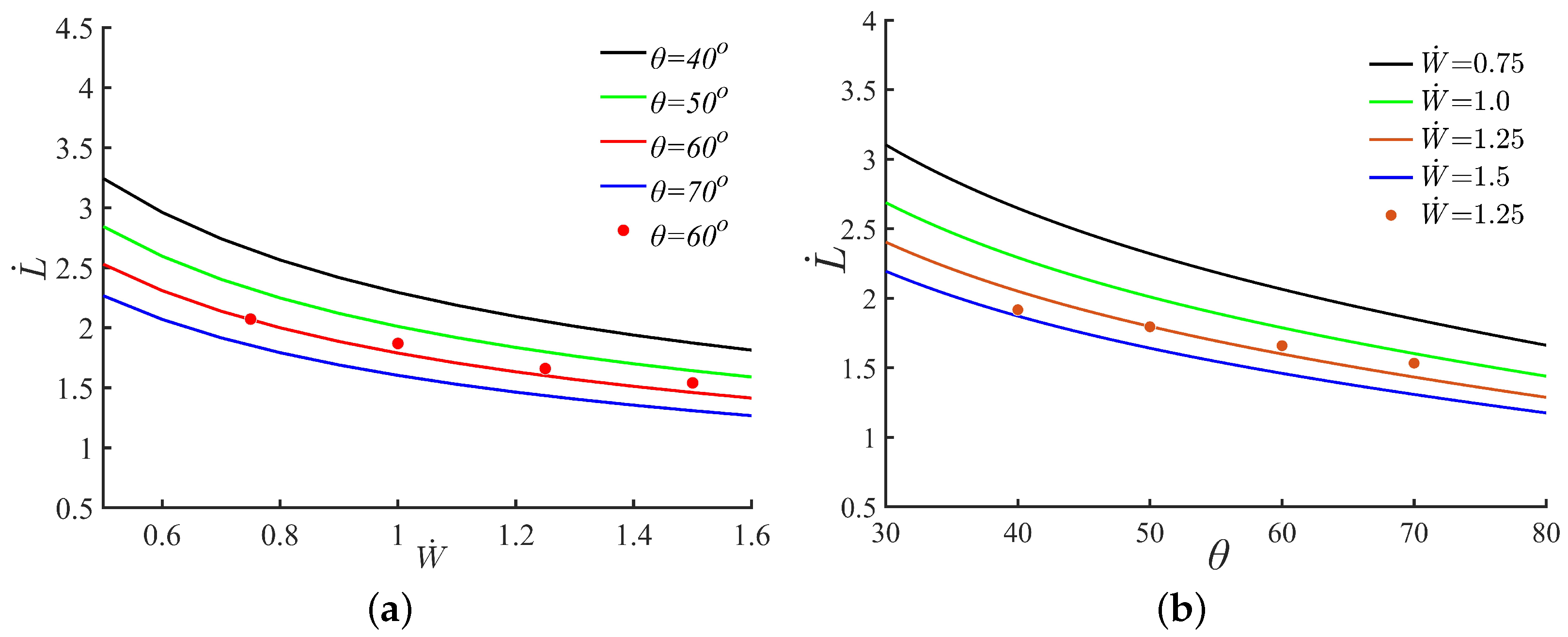
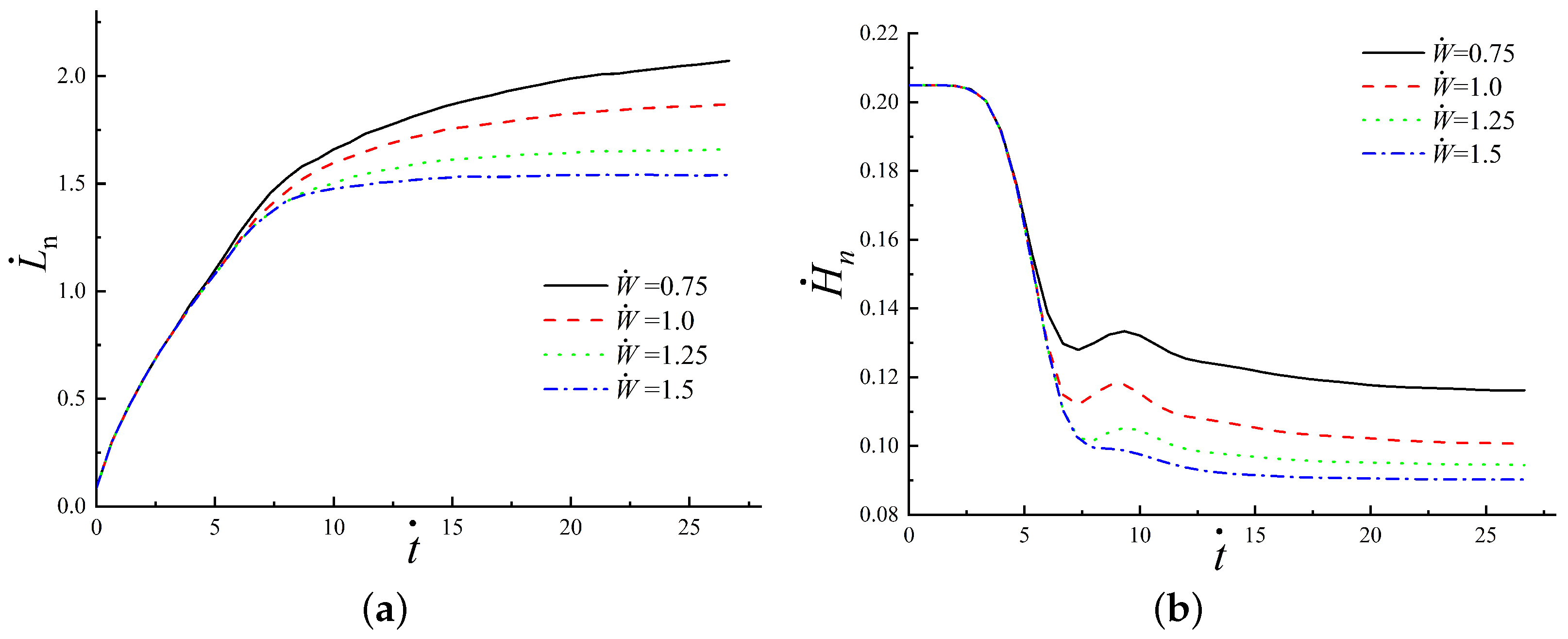


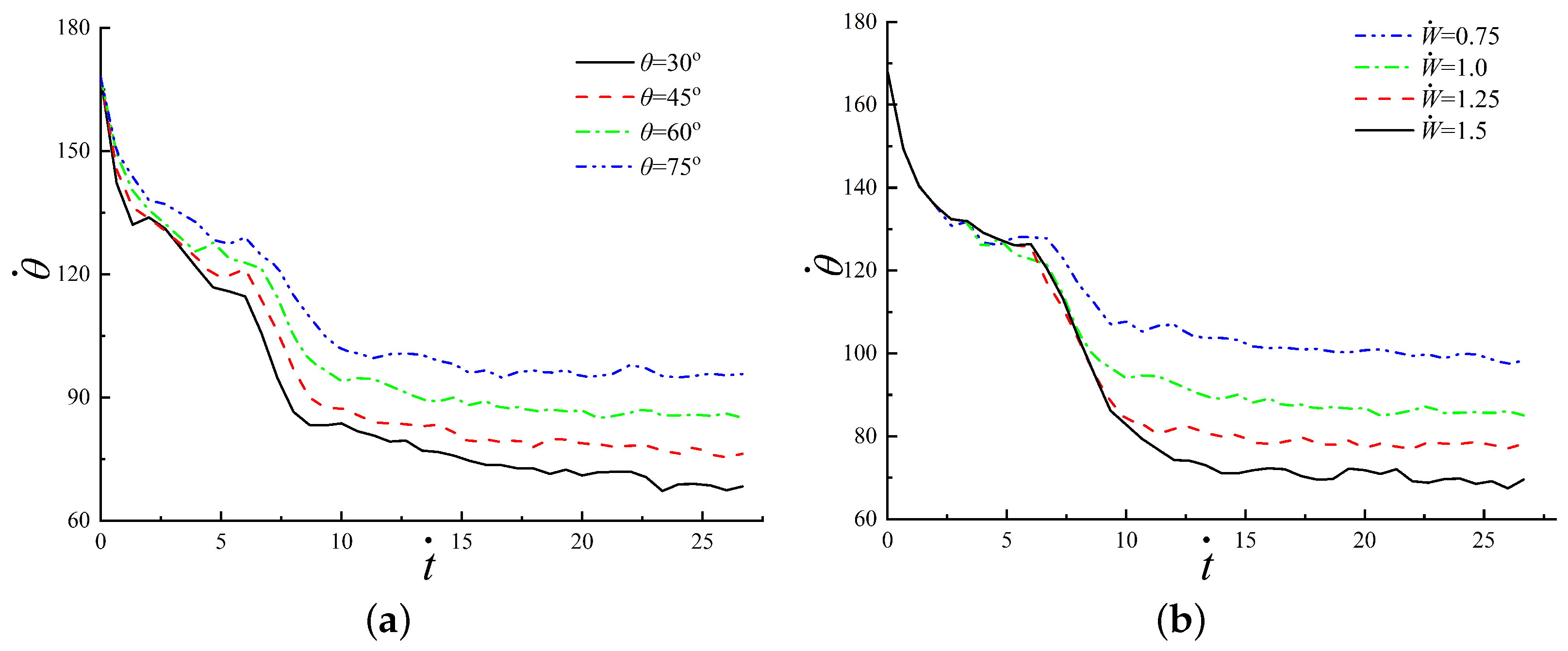


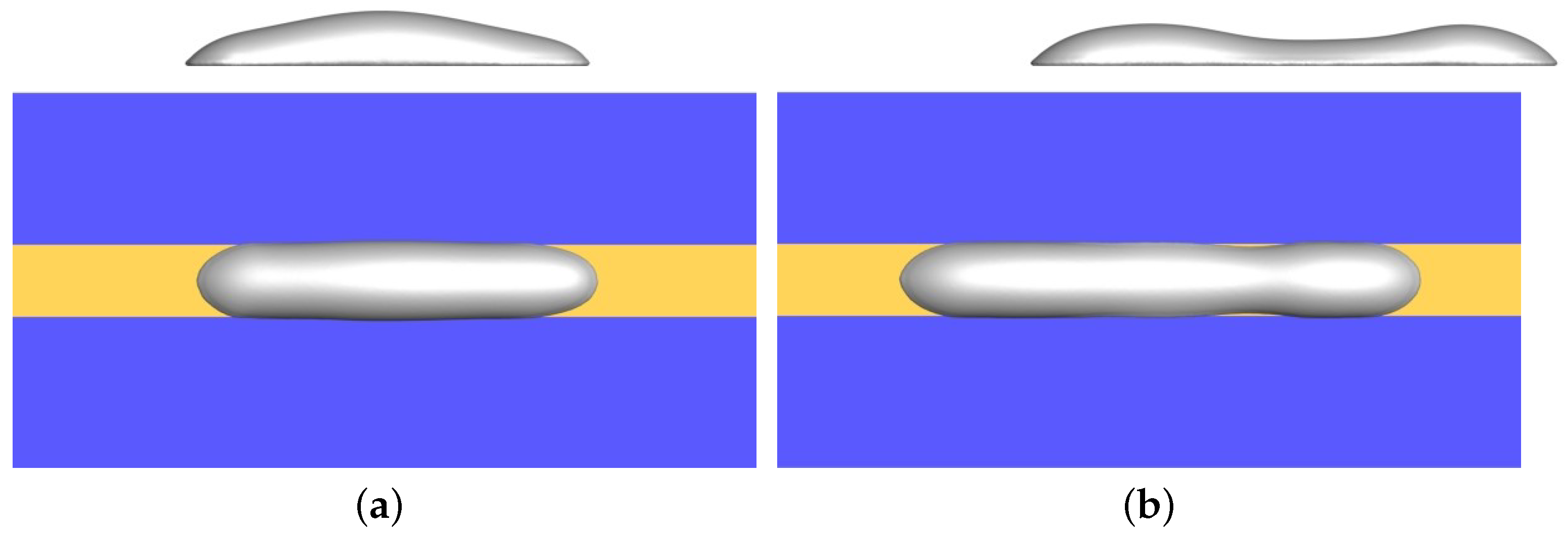

Disclaimer/Publisher’s Note: The statements, opinions and data contained in all publications are solely those of the individual author(s) and contributor(s) and not of MDPI and/or the editor(s). MDPI and/or the editor(s) disclaim responsibility for any injury to people or property resulting from any ideas, methods, instructions or products referred to in the content. |
© 2025 by the authors. Licensee MDPI, Basel, Switzerland. This article is an open access article distributed under the terms and conditions of the Creative Commons Attribution (CC BY) license (https://creativecommons.org/licenses/by/4.0/).
Share and Cite
Li, W.; Hu, J.; Liu, R. Displacement Mechanism of Sequential Droplets on a Wetting Confinement. Processes 2025, 13, 3014. https://doi.org/10.3390/pr13093014
Li W, Hu J, Liu R. Displacement Mechanism of Sequential Droplets on a Wetting Confinement. Processes. 2025; 13(9):3014. https://doi.org/10.3390/pr13093014
Chicago/Turabian StyleLi, Wenbin, Jie Hu, and Renxin Liu. 2025. "Displacement Mechanism of Sequential Droplets on a Wetting Confinement" Processes 13, no. 9: 3014. https://doi.org/10.3390/pr13093014
APA StyleLi, W., Hu, J., & Liu, R. (2025). Displacement Mechanism of Sequential Droplets on a Wetting Confinement. Processes, 13(9), 3014. https://doi.org/10.3390/pr13093014





